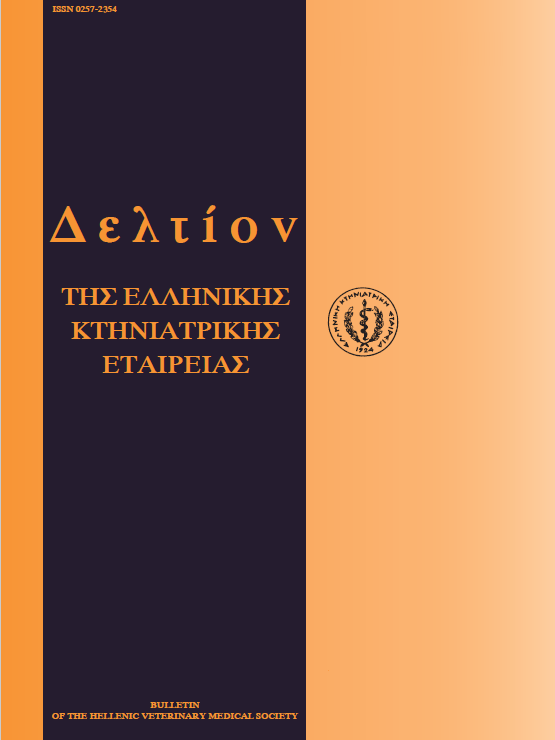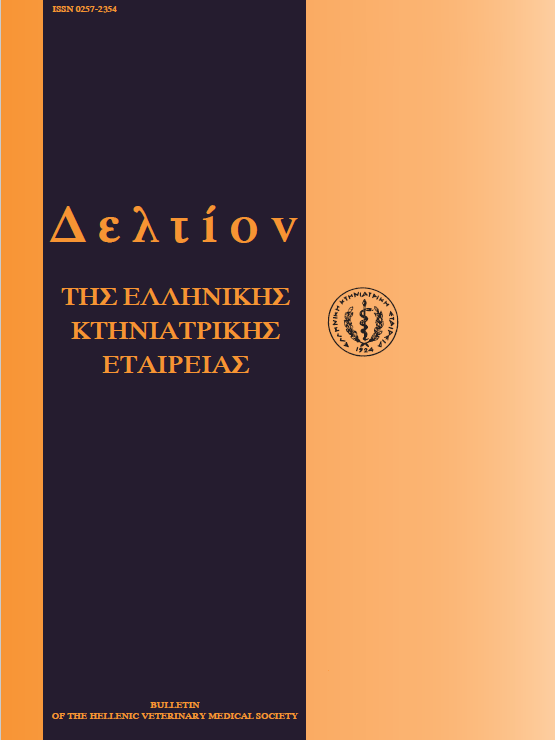Effect of Sinefungin on the attachment of the parasite Leishmania to the macrophages cell line J774G8
Abstract
The effect of Sinefungin on the attachment of the Leishmania strains L. infantum, L. tropica and L. major to the macrophages cell line J774G8 was studied. Inhibition of
the attachment to the surface of macrophages was observed to the Sinefungin sensitive strains L. tropica and L. major. This inhibition was obtained only for Sinefungin pretreated promastigotes (72 hours with 2.6 and 26 Μμ Sinefungin) when incubated with macrophages for 2 and 24 hours. After 2 h incubation period of the promastigote forms of the sensitive L. tropica with macrophages, the inhibition of the attachment was 100%, whereas for the sensitive L. major strain the inhibition was 17 and 36% at a concentration of Sinefungin 2.6 and 26 μΜ respectively. The percentage of the inhibition 24 h post infection was in the range of 52 to 77% for the L. tropica strain and from 73 to 86% for the L. major strain for promastigote pretreated with 2.6 and 26 μΜ Sinefungin respectively. Controls showed that Sinefungin was not toxic for the macrophages when used for 3 days at the above mentioned concentrations. Inhibition of the protozoa - macrophage cell line J774G8 adherence was a common finding leading us to the conclusion that Sinefungin is involved actively into that process.
Article Details
- How to Cite
-
TZORA (Α. ΤΖΩΡΑ) A., LAWRENCE, F., & ROBERT-GERO, M. (2018). Effect of Sinefungin on the attachment of the parasite Leishmania to the macrophages cell line J774G8. Journal of the Hellenic Veterinary Medical Society, 49(1), 59–65. https://doi.org/10.12681/jhvms.15748
- Issue
- Vol. 49 No. 1 (1998)
- Section
- Research Articles

This work is licensed under a Creative Commons Attribution-NonCommercial 4.0 International License.
Authors who publish with this journal agree to the following terms:
· Authors retain copyright and grant the journal right of first publication with the work simultaneously licensed under a Creative Commons Attribution Non-Commercial License that allows others to share the work with an acknowledgement of the work's authorship and initial publication in this journal.
· Authors are able to enter into separate, additional contractual arrangements for the non-exclusive distribution of the journal's published version of the work (e.g. post it to an institutional repository or publish it in a book), with an acknowledgement of its initial publication in this journal.
· Authors are permitted and encouraged to post their work online (preferably in institutional repositories or on their website) prior to and during the submission process, as it can lead to productive exchanges, as well as earlier and greater citation of published work.




